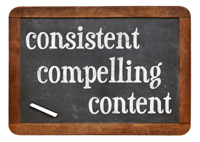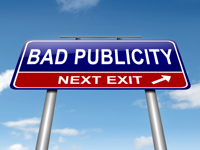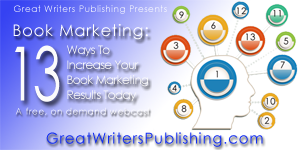How To Market A Book In 2015 – The Top 10 Ideas
We recently interviewed thousands of authors in preparation for a new webcast we developed entitled “13 Ways To Increase Your Book Marketing Results Today”. The goal was to answer the questions we received and to do so without any hype or hearsay and to present ideas that really work.
Many authors are unhappy with their marketing results. Most authors spend far, far too much money and get few results. Many others spend too much time marketing and end up with very little to show for the effort. Nearly all authors want to increase their sales, but most have a hard time doing so. Why do so many authors struggle with marketing their books?
Often it is because most authors believe book marketing involves telling as many people as possible about their work.
Hey- if it were that simple, everybody would be successful.
 Book marketing is a LOT more than telling somebody about something. Book marketing is telling readers about your book in such a way that they will like what you say SO MUCH it will cause them to TAKE ACTION – stand up, go to their computer, do an Internet search, hit a buy button, share their personal information, use their credit card, share what they found with their friends, pass the word on to others, become a fan. That is book marketing. It is both an art and a science.
Book marketing is a LOT more than telling somebody about something. Book marketing is telling readers about your book in such a way that they will like what you say SO MUCH it will cause them to TAKE ACTION – stand up, go to their computer, do an Internet search, hit a buy button, share their personal information, use their credit card, share what they found with their friends, pass the word on to others, become a fan. That is book marketing. It is both an art and a science.
Telling somebody about something is one thing. Marketing on the other hand is creating real results – action– through effective communications strategies designed for and sharply targeted to a very specific group of people. Real marketing is a completely different, very specific and dedicated discipline. This is especially true for book marketing.
Effective marketing is getting the product into the hands of the highest number of pre-sold buyers at the lowest possible cost. That is what you must do if you hope to be successful. Here are the top highlights from the webinar, titled:
HOW TO MARKET A BOOK IN 2015 – THE TOP 10 IDEAS
 1. IT IS NOT WHAT YOU WANT TO SELL – IT IS WHAT THE READERS WANT TO BUY
1. IT IS NOT WHAT YOU WANT TO SELL – IT IS WHAT THE READERS WANT TO BUY
We must start with the most basic of all components of the marketing strategy – understanding the target audience. While most authors believe their book should be read by everyone, that is a VERY weak message. You must instead carefully slice that ‘everyone’ group into smaller segments if you hope to have any chance at all to be successful. Here is a quick example: If your book is aimed at females age 18 to 80, that’s the total market profile. You will want to cut that very large group into smaller segments:
These could be: Females 18 to 25
Females 26 to 55
Females 56 to 80.
Why? Market segmentation allows you to create a much more powerful, very targeted and specific message for a particular group. If you say your book is for everybody, your entire target audience will likely just yawn. If you instead use a very specific message for females 18 to 25, the female 18 to 25 WILL respond to that message specific to their wants and needs in a much more positive way.
2. BE REALISTIC IN YOUR EXPECTATIONS
 The old adage ‘1 out of 200’ or 1/2 of 1% is almost an unwritten law in marketing. In other words if you want to get 1 response, you must get in front of 200 people. If you want to get 100 responses, you must get in front of 20,000 people. Not knowing this ‘law’, most authors get discouraged when they tell 100 people about the book and nobody buys it. That is just laughable. The job is much bigger than most people imagine. Marketing people live with numbers like these. When people new to marketing see these numbers it’s heart attack time for some. But that is the reality. You cannot ignore the reality, nor can you innocently believe you’ll get 1 out of 10. So the big point here – be realistic about the effort required. Book marketing success requires huge numbers. But that doesn’t mean you must work harder – instead, you must work smarter.
The old adage ‘1 out of 200’ or 1/2 of 1% is almost an unwritten law in marketing. In other words if you want to get 1 response, you must get in front of 200 people. If you want to get 100 responses, you must get in front of 20,000 people. Not knowing this ‘law’, most authors get discouraged when they tell 100 people about the book and nobody buys it. That is just laughable. The job is much bigger than most people imagine. Marketing people live with numbers like these. When people new to marketing see these numbers it’s heart attack time for some. But that is the reality. You cannot ignore the reality, nor can you innocently believe you’ll get 1 out of 10. So the big point here – be realistic about the effort required. Book marketing success requires huge numbers. But that doesn’t mean you must work harder – instead, you must work smarter.
3. PUSH VS PULL MARKETING
 Push marketing is when you send a message to others. Pull marketing is when people find you. Today’s Internet buying audience, which according to studies is nearly everyone, is a PULL audience PERIOD. It is permission based. The Internet buyer will often outright reject PUSH marketing. Push marketing is sending something – an advertisement, a social media message, a flyer, a postcard, an email, a press release – in an attempt to get somebody to buy something. ALWAYS REMEMBER: If people can skip a sales message, they WILL skip a sales message. Otherwise we would only have to run a few ads to be a best selling author. Don’t fool yourself.
Push marketing is when you send a message to others. Pull marketing is when people find you. Today’s Internet buying audience, which according to studies is nearly everyone, is a PULL audience PERIOD. It is permission based. The Internet buyer will often outright reject PUSH marketing. Push marketing is sending something – an advertisement, a social media message, a flyer, a postcard, an email, a press release – in an attempt to get somebody to buy something. ALWAYS REMEMBER: If people can skip a sales message, they WILL skip a sales message. Otherwise we would only have to run a few ads to be a best selling author. Don’t fool yourself.
Push marketing does not work well in a PULL marketing environment. If you are doing this, you are likely just talking to yourself. Very few people are listening. Yes, you will get some takers – maybe around 1/2 of 1% or 5 out of 1000. Ask yourself- is that how you want to spend your time and money – talking to uninterested people all day? Today it is not important that YOU find BUYERS – it is more important that THE BUYERS find YOU. That is PULL marketing. If you spend all your time and money trying to find buyers and then present them with a ‘buy now’ message, you are in for a VERY difficult time.
4. SOCIAL MEDIA
 There are two ways to use social media. Unfortunately most people use social media as an advertising tool. They use it to ‘yell, sell and tell’. No. Don’t go there. Ask anyone who has tried it. You will only end up getting your heart broken and will waste a lot of time.
There are two ways to use social media. Unfortunately most people use social media as an advertising tool. They use it to ‘yell, sell and tell’. No. Don’t go there. Ask anyone who has tried it. You will only end up getting your heart broken and will waste a lot of time.
What is your goal? If your goal in marketing your book is to feel good or get attention in the form of likes or followers, social media can help perhaps. But if the your goal is to create sales – an exchange of money – you will likely need to change your approach to social media. There is nothing wrong in using social media as a feel good exercise and for many people that is what it becomes. But feeling good does not create sales. Personally I would rather feel good about my sales than the number of likes I have.
Social media MARKETING, a completely different approach to social media, is beyond the scope of this post, so suffice it to say that social media can be used as an awareness tool IF IT IS SHARPLY OPTIMIZED for the target audience segments you have identified. The ‘buy my book, buy my book’ messages, sent day after day will simply cause people, eventually, to just ignore those posts, thereby creating the opposite effect. And you will end up talking to yourself. You might feel good because you are very busy, but it’s possible to be very busy doing the wrong things. That leads directly to mediocrity and failure.
5. BRANDING
 In the old days of selling through bookstores, the buyer was usually faced with limited choices. There were only so many books on the wall and if they wanted something else they had to order it. Not so today. Hundreds upon hundreds of thousands of book come out every year, year after year. And today, due to technology, every single book out there is readily available to every buyer who has a cell phone, tablet or computer. Every single book is instantly available with a click of a mouse or the push of a button. The competition is one click away and it is every book. Therefore, branding is not only important – it is vitally important to creating sales.
In the old days of selling through bookstores, the buyer was usually faced with limited choices. There were only so many books on the wall and if they wanted something else they had to order it. Not so today. Hundreds upon hundreds of thousands of book come out every year, year after year. And today, due to technology, every single book out there is readily available to every buyer who has a cell phone, tablet or computer. Every single book is instantly available with a click of a mouse or the push of a button. The competition is one click away and it is every book. Therefore, branding is not only important – it is vitally important to creating sales.
Your branding approach must be sharper than the hundreds of thousands of authors competing for those dollars. Your brand and branding language must clearly communicate WHY that buyer should choose your work and NOT one of the other 14 gabillion books just one click away. If you don’t communicate the right ideas – clearly, with the needs of your target audience in mind – other authors will and they will sell their books to these buyers.
If you look like everybody else, if you sound like everybody else, if you say the same thing everybody else is saying, if you use jargon like ‘quick read’ or ‘page turner’ you are going to appear to be like everybody else. Nobody wants to buy a book that is like every other book. Readers want to find something that is new, exciting and very different. That is where the brand and branding messages come in.
6. MEDIA
 In the old days, just a few years ago, every author wanted to get on Oprah or some other popular media outlet to discuss his or her work. This seldom happened, but it was a dream for many authors. Today, that TRADITIONAL MEDIA appearance doesn’t mean as much as in years past. BUT the INTERNET MEDIA appearance is still VERY important IF DONE THE RIGHT WAY. People use the Internet to get information – period. The Internet has opened up radio and television to nearly everyone, but a major error is that most Internet media outlets are very low quality and have very few listeners or viewers. An online media appearance means nothing if nobody is watching or listening or if the production quality is low. Conversely, on larger outlets it is possible to send a very bad message to a large number of people if when an appearance is made on that larger outlet, and the author has had no media training or has a wishy-washy message or weak branding approach, or is not able to speak clearly about his or her book. Your message must be laser sharp and pack a real punch. REMEMBER AGAIN – IT IS NOT WHAT YOU WANT TO SAY – IT IS WHAT YOUR TARGET AUDIENCE WANTS TO HEAR.
In the old days, just a few years ago, every author wanted to get on Oprah or some other popular media outlet to discuss his or her work. This seldom happened, but it was a dream for many authors. Today, that TRADITIONAL MEDIA appearance doesn’t mean as much as in years past. BUT the INTERNET MEDIA appearance is still VERY important IF DONE THE RIGHT WAY. People use the Internet to get information – period. The Internet has opened up radio and television to nearly everyone, but a major error is that most Internet media outlets are very low quality and have very few listeners or viewers. An online media appearance means nothing if nobody is watching or listening or if the production quality is low. Conversely, on larger outlets it is possible to send a very bad message to a large number of people if when an appearance is made on that larger outlet, and the author has had no media training or has a wishy-washy message or weak branding approach, or is not able to speak clearly about his or her book. Your message must be laser sharp and pack a real punch. REMEMBER AGAIN – IT IS NOT WHAT YOU WANT TO SAY – IT IS WHAT YOUR TARGET AUDIENCE WANTS TO HEAR.
7. WEBSITES
 Your website should be the central conversion point. That is where your sales are made. But a website is not a brochure – it is a store and it must function as a well oiled machine. This involves leading visitors to a buying decision, in the way they prefer, using a non-threatening strategic approach. Convincing the visitor to hit the buy button is no small task.
Your website should be the central conversion point. That is where your sales are made. But a website is not a brochure – it is a store and it must function as a well oiled machine. This involves leading visitors to a buying decision, in the way they prefer, using a non-threatening strategic approach. Convincing the visitor to hit the buy button is no small task.
It is on your website that everything is tied together – branding, positioning, credibility, benefits language, non-threatening calls to action – everything. And you must understand how people deal with websites – eye flow studies and conversion strategies, etc. Unfortunately many authors just put up a homemade website, do zero optimization and feel that’s good enough. Not so. Ask anyone who has done it.
Don’t have a website? Pages on social media or book sites are not a store – not even close. These are just informational pages.
There are two aspects to a site – it must be optimized so that the target audience can find it, and it must be carefully designed to convert those visitors to book sales. I can’t tell you how many sites I’ve seen on which the header says something like ‘John Smith – Author‘ and then the first thing we see is ‘Buy This Book!’. That’s like walking into a store and the clerk walks up to you and says ‘HELLO! GIVE ME YOUR CREDIT CARD NOW!!’. That borders on insanity, is very unprofessional and is the kiss of death.
8. STRATEGY, STRATEGY, STRATEGY
 A major issue today is the sheer number of people who present themselves as successful marketing professionals when in fact they have very little marketing experience at all. Their shrewdness is legendary and their capacity to appear honest and sincere is well practiced. The person who has little or no experience in real world marketing is easily misled. The end result is time and money invested in things that lead only to disillusionment.
A major issue today is the sheer number of people who present themselves as successful marketing professionals when in fact they have very little marketing experience at all. Their shrewdness is legendary and their capacity to appear honest and sincere is well practiced. The person who has little or no experience in real world marketing is easily misled. The end result is time and money invested in things that lead only to disillusionment.
The word ‘marketing’ has become just another buzzword. Endless people refer to themselves as ‘gurus’ or ‘experts’. And unfortunately there are many out there who will take advantage of the unknowing, claiming that book marketing is putting up a Facebook fan page or developing a homemade website. This all falls under the heading of hype and hearsay.
Another major issue is that people tend to look for the easy way out. There is no easy way. There is no one-size-fits-all plan that will assure success, so don’t fall for that either. Every target audience, every segment is different. Every book is different. Every book marketing strategy must be tailor made and sharply optimized for the target audience. Listening to the advice of those who have little experience or hoping to find the easy way to success will simply cause one to fail faster.
There are a zillion great authors out there who never got a chance. They ended up languishing in obscurity because they did not get their book marketing right. Conversely, there are many horrible books that have been wildly successful because they did get the book marketing right. You must find the balance between great writing and great book marketing.
9. BOOK MARKETING IS A BUSINESS
 Book marketing is a business. It requires a two fold investment – 1). An investment of time and 2). an investment of dollars. You cannot expect to be successful without spending time on book marketing. That is not to say that a major investment of time is required – quite the contrary. The important factor is often not the amount of time spent, but the length of time invested. Results will not happen overnight. Ask any successful author, actor or rock star. Ask your attorney. Your plumber. Your local hardware store owner. It takes time, period. Unless you are that one in a million, you will have to spend the time.
Book marketing is a business. It requires a two fold investment – 1). An investment of time and 2). an investment of dollars. You cannot expect to be successful without spending time on book marketing. That is not to say that a major investment of time is required – quite the contrary. The important factor is often not the amount of time spent, but the length of time invested. Results will not happen overnight. Ask any successful author, actor or rock star. Ask your attorney. Your plumber. Your local hardware store owner. It takes time, period. Unless you are that one in a million, you will have to spend the time.
As regards to money, it is completely unrealistic to feel think that anything, including your book, can be marketed without an investment of money. The key point here is to invest as little as possible and to invest whatever money is available wisely. It is not necessary to spend huge amounts of money but it is necessary to invest the amount required to achieve the goal. Effective book marketing is within the reach of nearly everyone. But a generous amount of common sense must be applied. (For an expanded view of the common sense approach to budgeting, see this page).
10. USE THE RIGHT TOOLS
 One of the questions on nearly everybody’s mind is “Which tools are the best tools to use to market my book?” The answer? All of them. And none of them. Have you ever heard that old saying ‘When you only have a hammer, everything looks like a nail?’ That’s another way of saying that you can waste a lot of time if you don’t use the right tools. But how do you know which tools will actually work for YOUR PARTICULAR SLICE of the book buying public?
One of the questions on nearly everybody’s mind is “Which tools are the best tools to use to market my book?” The answer? All of them. And none of them. Have you ever heard that old saying ‘When you only have a hammer, everything looks like a nail?’ That’s another way of saying that you can waste a lot of time if you don’t use the right tools. But how do you know which tools will actually work for YOUR PARTICULAR SLICE of the book buying public?
The key is to know and segment your audience. Knowing who they are, segmenting that audience, understanding the needs of that segment as they perceive those needs- that is the first step. The brand, the position, the benefits language and the calls to action are designed around those factors. The promotional tools you decide to use must be based on those factors also or you will end up wasting a lot of time talking to people who simply will not listen at all.
Most authors decide which tools they are going to use and then get frustrated when it doesn’t work. That’s kind of silly, isn’t it? It’s backwards. Yet most authors do it. Look, you can’t force Grandma to use Facebook. You can’t get kids to read magazines. If you decide you are going to use Facebook to sell your work and then wait for your audience to show up there, you are in for a shock.
11. THE BEST WAY TO SELL BOOKS?
 Word of mouth, of course. Nothing sells books like word of mouth. But you cannot possibly create word of mouth without having buyers first. Nobody will pass the word on about a book or recommend it to a friend unless they have actually read it. So we you must start with creating sales. So how do you do that?
Word of mouth, of course. Nothing sells books like word of mouth. But you cannot possibly create word of mouth without having buyers first. Nobody will pass the word on about a book or recommend it to a friend unless they have actually read it. So we you must start with creating sales. So how do you do that?
Don’t chase buyers. Instead, get in front of people who have already made a buying decision. Don’t tell them what you want to tell them – tell them what they want to hear, say it how they want to hear it, not how you want to say it, and do it using the tools they want to use, not the ones your friends have told you will work.
That’s more than one. But it all comes under the heading of – get in front of a targeted book buying audience specific to your work in the right way – with a professional level marketing strategy.
The competition is fierce and a lot of that competition knows what they are doing. If you don’t REALLY know what you are doing, or if you are using low level, garage sale marketing methods – instead of a comprehensive book marketing method – you will not be successful so – the number one method could be said to be: Develop a laser sharp, professional level book marketing strategy specifically for your target audience and then implement it.
 You can view the full video here
You can view the full video here